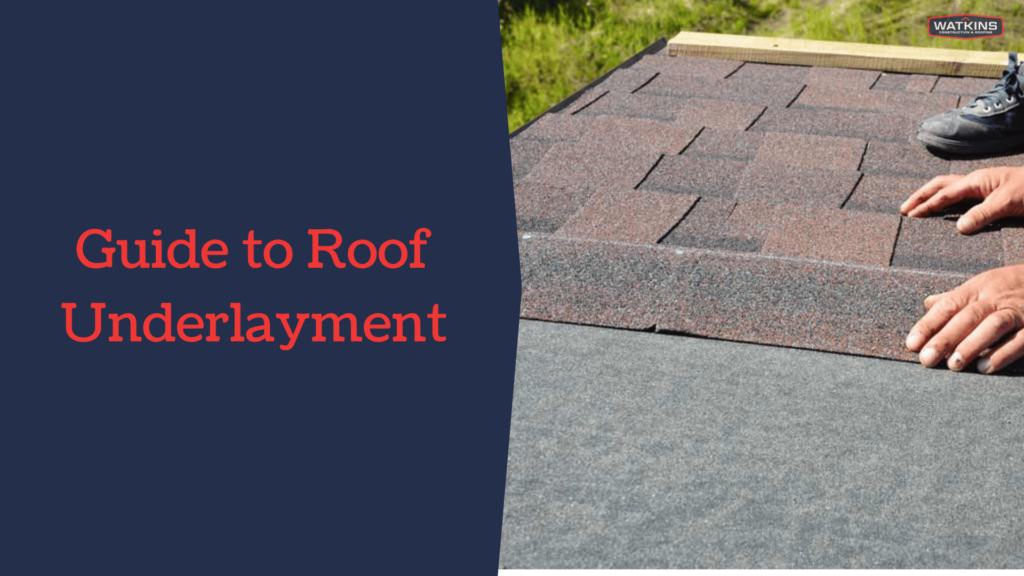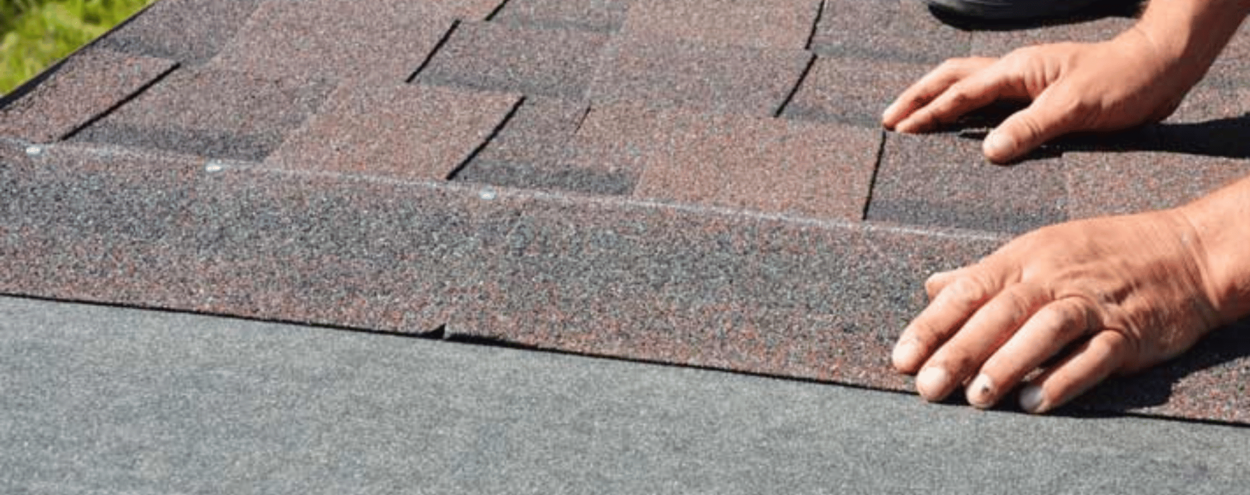Watkins Construction & Roofing has put together a guide to roof underlayment. Roof underlayment is a crucial part of every roofing system. Do you plan to replace your roof? You must think about a new underlayment layer. Keep that in mind while shopping for materials for your new roof.
For a long time, asphalt roofs could only use asphalt-wet felt underlayments. Newer synthetic underlayments provide several advantages that are worth examining.
Finding a reliable, experienced contractor may clear your underlayment choices and their costs.
However, getting some knowledge before purchasing is always a good idea. So here is a quick rundown of the benefits and drawbacks of the three most common types of underlayment.

Why Do Roofs Need Underlayment?
The underlayment of your roof adds an extra layer of defense against the weather. Before fastening the shingles in place, your roofer must apply the roofing underlayment.
Water can seep through the roof deck if your roofer does not install underlayment. Many problems can result from water getting through your roof, including leaks, damage, mold, and mildew.
Underlayment adds an extra layer of insulation. Also, it acts as a sealant around your flashing and an extra sound barrier. On the other hand, it provides a more even surface for attaching shingles.
What Roofing Underlayment Options Exist?
You can find three types of roof underlayment. Let’s have a deeper look at all of them.
- Felt Underlayment
Felt is one of the most traditional roofing underlayments. Felt paper, tar paper, and sandpaper are all names for the same thing.
Typically, felt underlayment comes in two weights: 15 pounds per 100 square feet and 30 pounds per 100 square feet. Moreover, it is made of an organic paper or asphalt-saturated mat. You can find these options as No. 15 and No. 30 felt.
A number 15 felt might be a good option for little crafts, but it tears quickly. Besides, you must not leave it uncovered to the weather throughout the installation process. This exposition might cause it to absorb water and wrinkle.
Commonly, contractors recommend using No. 30 felt owing to its longevity. Different regions of the country may favor one type of underlayment over another. Besides, every contractor may have its own preferences.
- Synthetic
Usually, many layers of polymers weave synthetic underlayment. However, the precise materials utilized will change from one manufacturer to another.
Over the past decade or two, synthetic underlayment has surpassed felt underlayment in popularity. This alternative provides many benefits it provides over its predecessor.
- Strength against wear and damage
- Provides a safe surface for foot traffic
- Lighter weight means greater coverage per roll. Therefore, your roofers will need fewer trips up and down the ladder.
- Waterproofing and mold resistance
- The overlap guides and distinct lines greatly facilitate the installation process
- Rubberized Asphalt Underlayment
Rubberized asphalt underlayment is made from asphalt and rubber polymers. Sometimes, it is called self-adhesive underlayment. You can use this material as the primary underlayment or solely in areas of your roof where water leaks are more probable to occur. However, it is one of the most expensive forms of underlayment. If you live in a very hot or cold climate, this is the best choice if you want to protect your roof from damage and keep water out of your home.
This underlayment is self-adhering. So you can apply it directly to the roof deck for a watertight seal.
Rubberized or self-adhered underlayment can protect roofs with penetrations in their decks from damage.
You can use this sort of underlayment to prevent leaks in vulnerable spots like:
- Vents
- Valleys
- Eaves
- Skylights
- Chimneys
Manufacturers can reinforce the rubberized underlayment’s top surface with a weather-resistant material. They can make this layer with polyester, polyethylene, or granulated rubber. Compared to other types of underlayment, the non-skid surface makes it much safer for roofers to walk on when installing.
Rubberized asphalt underlayment can withstand expansion and contraction without cracking. Therefore, it is helpful in regions with extreme temperature changes and severe winters.
When you have enough good-quality information you can make the best choices. So, buying the correct roofing materials for your new roof is a critical decision!
For more information, you can reach Watkins Construction & Roofing at 601-488-3179. We service areas in Jackson, Flowood, Clinton, and Ridgeland, MS.
